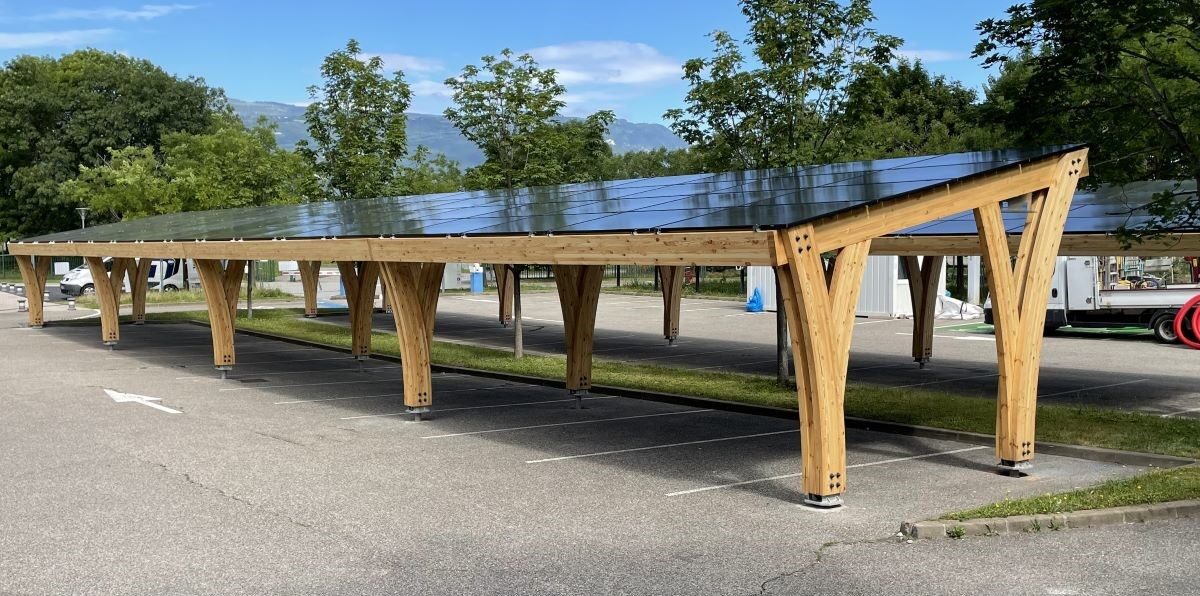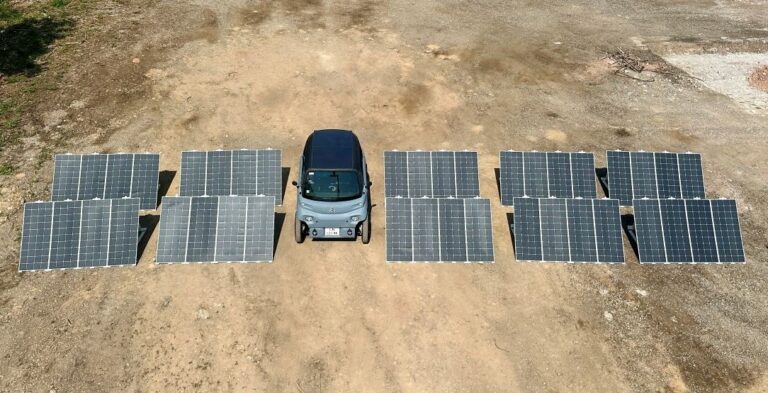La Croisière Verte is the name of an expedition of 13,500 km, from the north to the south of Africa, in a fleet of four Citroën AMI vehicles, each with 5,600 W of lightweight PV panels in foldable packages.
A fleet of four Citroën AMI vehicles, classified as electric four-wheelers, will soon set off on a journey called La Croisière Verte. It is a 13,500 km expedition from the north to the south of the African continent to demonstrate the potential of compact, lightweight electric vehicles. They will each carry 5,600W of solar panels, which can be set up for static charging along the way.
La Croisière Verte was founded by Éric Vigouroux, a French entrepreneur and former Dakkar Rally pilot, who now focuses on sustainable travel. Also on the trip is Dutch engineer Maarten van Pel, who recently completed an overland trip around Africa in an electric 4×4 Skoda, as reported by pv magazine.
The team will leave in October, a hundred years after historic African continental expeditions that also involved Citroën vehicles. It will travel from Paris to Marseille and then through Morocco, heading south: destination Cape Town, South Africa. “Our idea is that adventure can be sustainable and fun, even with a compact, light electric vehicle,” Van Pel said pv magazine.
The plan is to drive at an average speed of 45 km/h, covering 200 km per day in two shifts, one starting early in the morning and the other starting late in the afternoon, with battery charging sessions during peak hours in the sun.
“The Citroen AMI fleet will be equipped with a solar panel on the roof, but static charging is the main energy source,” Van Pel explains. Each Citroen AMI will carry 5,600W of solar panels in portable multi-panel packages that unfold as mounting racks.
“All panels together generate 22 kW of PV power,” says Van Pel. They are custom-designed, lightweight, ultra-thin modules made with monocrystalline interdigitated back-contact technology from Singapore-based Maxeon. They were developed together with the PV system by the Dutch specialist manufacturer of PV modules Mito Solar.
The racks are made of glass fiber coated PET foam. The angle is adjustable to adapt to the position of the sun due to seasonal and latitude changes. “We leave in the autumn and arrive in the countries of South Africa in the summer,” says Van Pel.
A simple MPPT with off-the-shelf equipment is all that was required for the inverter’s functionality. According to Van Pel, the electronics for charging the 48 V battery are typical of a very small PV system that integrates a higher voltage capacity.
The Citroën AMI vehicles were adapted for the journey. In addition to the integrated solar PV roof, the standard 6 kWh battery was replaced with a larger set of batteries to extend the range from 70 km to 250 km. Furthermore, drum motors were added for each of the rear wheels and the chassis was doubled in height for extra ground clearance.
Image: La Croisière Verte
This content is copyrighted and may not be reused. If you would like to collaborate with us and reuse some of our content, please contact: editors@pv-magazine.com.
Popular content



